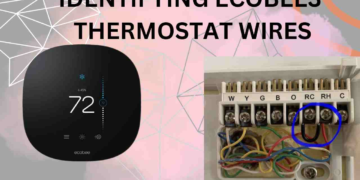What is ARIA?
ARIA is a W3C detail that means “Accessible Rich Internet Applications.” It comprises markup that can be added to HTML to impart the jobs, states, and properties of UI components to assistive innovations (AT).
This data helps screen peruses and other ATs to more readily comprehend the components on a website page and to give a UI that empowers their clients to communicate with those components really.
It supplements HTML with the goal that collaborations and gadgets usually utilized in applications can be passed to assistive advancements when there isn’t generally a system.
For instance, ARIA empowers available JavaScript gadgets, structure clues and blunder messages, live happy updates, and that’s just the beginning.
What Is ARIA Menu and ARIA Label?
Here we will differentiate between ARIA Menu and ARIA Label;
- ARIA Menu
An HTML-based menu gadget mainly comprises the main menu bar with pull-down menus. To explain the HMTL menu to assistive innovation Accessible Rich Internet Application (ARIA) markup can be added to the HTML components used to make the menu.
- ARIA Label
ARIA-Label is a trait characterized in the WAI-ARIA detail. This property expands local HTML, permitting you to fundamentally have an impact on how an HTML component is translated into the accessibility tree.
As a matter of course, an HTML component will utilize its text content as the accessibility label.
Read here : What Is TRANSALL In Information Technology?
How Does ARIA Operate in HTML?
The ARIA-controls trait recognizes the component/s whose items or presence are monitored by the part on which the property is set, paying little mind to what sort of connection starts the affected way of behaving.

At the point when a menu is shown, the button object that flips the permeability of that menu has an aria-expanded=”true” set. At the point when the menu is covered up, aria-expanded can be precluded.
On the off chance that predefined when the menu is covered up, it ought to be set as aria-expanded=”false”.
What If You Have An Error in ARIA?
The direct response is to eliminate role=”menu” from each sub-route list. In fact, it is a route and you could try and call it a menu however that isn’t needed role=”menu” is for.
Read here : What Is GRANULAR Recovery Technology (GTR)?
How Does ARIA Interlinks With CSS?

The ARIA-chose property demonstrates the current “chose” state for a grid cell, choice, column, and tab jobs. This quality is utilized to demonstrate which components inside single-determination and different choice composite gadgets are chosen.
For What Mainly ARIA Is Used?
ARIA technology is widely known and used for these roles;
- ROLE
- STATES & ATTRIBUTES
ROLES
The roles are divided into three sub-roles as follows;
- Document Structure Role
- Milepost Tracking
- Abstract Roles
let’s discuss these ROLES in brief;
Read here : How To Block Mind-Reading Technology?
1- Document Structure Role
Document Structure Roles aren’t ordinarily performed, yet rather give explanations to segments inside a page. Clients use report structure jobs to recognize content while exploring a page, which helps provide them with the setting of the substance they’re taking in.
While HTML 5 might give quite a bit of this set all alone, screen peruses support for HTML 5 is here and there missing. Consequently, the heartiest decision is to use both.
2- Milepost Tracking
Users use Milepost Roles to explore through a page. For example, a screen reader will declare the beginning and end of every milestone job set on a page, and its web rotor will show a rundown of these jobs/districts.
3- Abstract Roles
While going about as the establishment for any remaining jobs, unique jobs are used by programs and ought not to be utilized in code. All things being equal, they are utilized to give jobs their significance in setting and help with the expansion of new jobs.
STATES & ATTRIBUTES
States and attributes are implied to components and are utilized together to help ARIA jobs exist on a page. States can change all alone or with client communication, as a rule with JavaScript. Properties seldom change whenever they’re set.
These are categorized in the following categories;
- Live Region
- Widget
- Relationship
- Drag & Drop
1- Live Region
It Demonstrates changes in happiness for the user, for example, setting whether a message will be perused resoundingly with the progression of content or rather will intrude on the progression of content and be perused out loud right away.
These components don’t have to have a center and can remember data for how the client can continue. Live regions are likewise used to give notifications to their users after structures have been submitted.
2- Widget
It is used for normal UI components that get input from users while handling those activities and data.
Usage of gadget credits to all the more effective use of interactive UI components, similar to structures and overlays/modals/popups. This assists with keeping away from disarray during the info interaction.
3- Relationship
This attribute defines the relationship between the elements and components that cannot be known any other way.
This uses relationship attributes to comprehend when data is connected while exploring the page and assembling extra information from different components like structures, menus, and tabs/boards.
4- Drag & Drop
This attribute Conveys data about intuitive components, including drag-able components and their drop targets. The use of intuitive characteristics to associate with simplified parts utilizing different techniques no matter what their inability.
Read here : Which Technologies Combine to Make Data a Critical Organizational Asset?
Nervousness About How to Involve ARIA in the Developer’s Community?
Yes, there is some confusion to use ARIA around the world. This issue comes down to how you utilize a button versus how they use a connection. A connection can be enacted by users by squeezing Enter/Return, while a button can be initiated when they press the Spacebar.
In the event that you add a connection with the role=” button“, the AT will distinguish it as a button. In any case, the client can become befuddled when they attempt to press the Spacebar with no outcome. To this end, it’s ideal to keep joins as connections, and buttons as buttons.
Never Use ARIA, Why?
It’s reasonable that some say along these lines ”Never Use ARIA”, generally on account of the abuse of ARIA. Nonetheless, there are a few ARIA jobs and properties that are not accessible in HTML5, yet are expected to make the web simpler to explore and use for clients.
Read here : Why Does The Adoption Of New Technology Tend to Increase The Supply?
Everything really revolves around staying with local controls whenever the situation allows, and involving ARIA if all else fails when a component can’t be made available in any case. It’s a difficult exercise.











